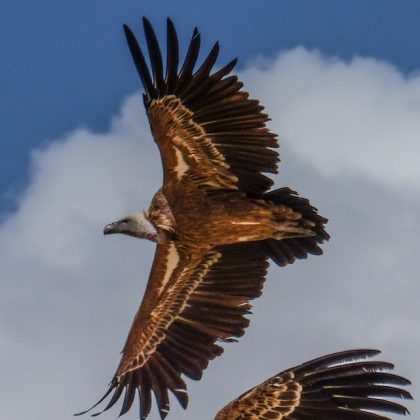Uncovering the status of the Arabian tahr, an icon of the Hajar Mountains of Oman and the UAE
Species distribution models are a method used by conservationists to make inferences from limited data sets, in a format that can facilitate conservation management across landscapes. They are particularly suitable for filling gaps in knowledge of scarce populations and those inhabiting inaccessible terrain. The Arabian tahr is one such species. Inhabiting the precipitous cliffs of north eastern Arabia, the species is rarely seen and poorly known.
The Arabian tahr is an Endangered mountain goat, endemic to the Hajar Mountains of northern Oman and the United Arab Emirates. As Oman has vast oil reserves the country has experienced extensive infrastructural development in the last 20 years. The Hajar Mountains have not escaped the impacts, and new conservation tools are needed to preserve the unique biodiversity of the region.
In this study a team from the Office for Conservation of the Environment, the Sultanate of Oman conducted an occupancy survey across the Hajar Mountains of Oman. Their objective was to use distribution models to elucidate the current status of the Arabian tahr and shed light on the threats the population is currently facing.
The researchers set a camera trapping network across the 650 km long Hajar Mountain range to achieve the first comprehensive survey of the mountain chain. The survey showed the Endangered status of the Arabian tahr is indeed justified: there has been a large reduction in tahr distribution in the last 20-years, and only approximately 23.9 % (6,986 km2) of the Hajar Mountains is currently occupied by the species. The researchers found competition with domestic goats was a major threat, as was the expansion of human activities in the mountains. The unexplained absence of tahr in apparently suitable habitats was attributed to illegal poaching which sadly still continues today. On the positive side, protected areas had a very positive effect on tahr occupancy, showing the benefits conferred by legal protection. Excitingly, several previously unknown concentrations of tahr were recorded in the western Hajar Mountains.
The detailed distribution map produced during this study and our greater understanding of current threats are important outputs for the conservation management of tahr. This knowledge is being used to improve planning of developments to minimize negative impacts to core habitats, and in focusing protection where most effective. These and other measures are sorely needed to conserve this iconic symbol of Arabia.
To find out more, you can download the article published in Oryx ‘Refining conservation strategies using distribution modelling: a case study of the Endangered Arabian tahr Arabitragus jayakari’ by Steven Ross, Mansoor H. Al Jahdhami and Haitham Al Rawahi for free until 20th September 2017.






